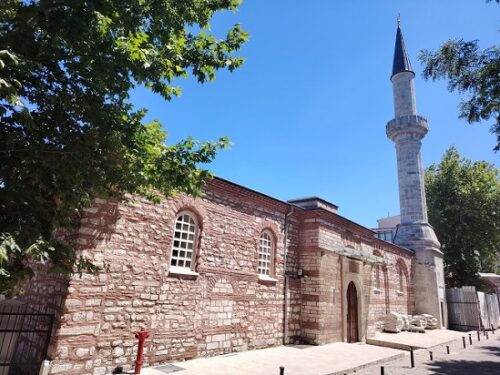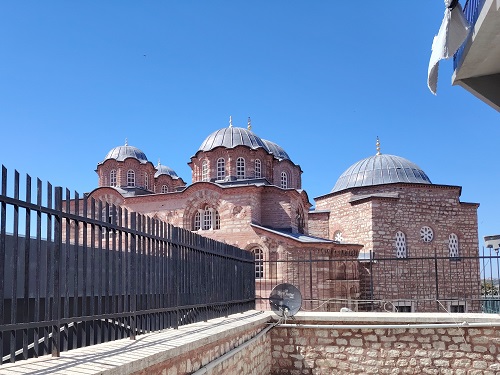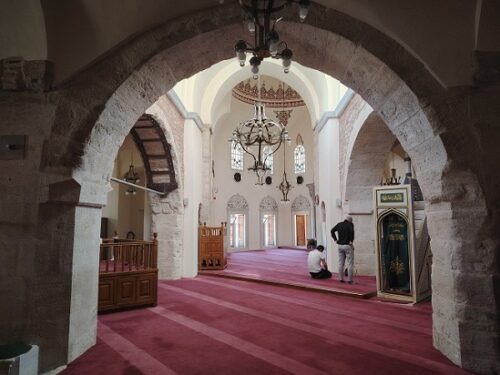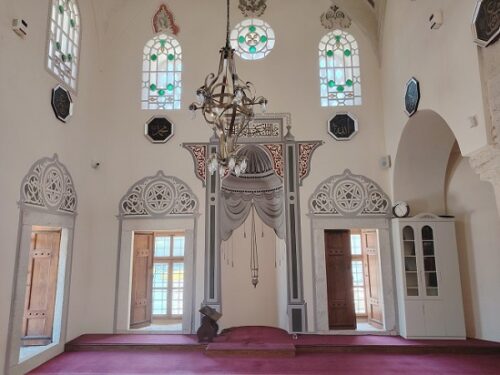I returned to Istanbul in June 2024. Naturally, the Pammakaristos Monastery was on my list, so I visited while exploring the Balat neighbourhood. As you can see in these photos, they completed the restoration works earlier that year. However, I was only able to visit the mosque section of the building.
Then, I went back again in July 2025. To my disappointment, the museum located in the pareklesion was still closed. If you follow this official link, you will see that it is currently under restoration and closed until further notice.

SHORT HISTORY OF THE MONASTERY
The Byzantine Emperor John II Komnenos founded te Pammakaristos Monastery during his reign. Therefore, this Middle Byzantine church belongs to the Komnenian period of Byzantine history.
The Latin Empire ceased to exist in 1261 when the Byzantines recaptured Constantinople from the leaders of the Fourth Crusade. The protostrator Glabas, who then owned the monsatery, arranged extensive restoration works. After his death in 1305, his widow built the parekklesion.
Parekklesion means chapel. This particular chapel serves as a museum and is the most interesting part of the Byzantine structure, certainly the section that you would want to see.

After the fall of Constantinople to the Ottoman army, the Pammakaristos Monastery served as the seat of the Patriarchate for 134 years. However, during the reign of Sultan Murad III, it was converted into the Fethiye Mosque in 1587.
Fethiye means “conquest”. The conversion of the Christian Orthodox monastery into a mosque was meant to celebrate the Ottoman conquest of Georgia. When you think about it, it is surprising that the monastery survived as a Christian temple for so long. It was a period of rapid expansin of the Ottoman state, during which many countries and regions became part of the empire.
Sultan Selim I conquered the Mamluk Sultanate of Egypt in 1517 and expanded the empire by 70%. His son, Sultan Suleiman the Magnificent, conquered Belgrade in 1521, Rhodes in 1523 and most of Hungary after the Battle of Mohacs in 1525. Still, they didn’t convert the Pammakaristos Monastery into a mosque to commemorate any of these major victories.

PAMMAKARISTOS HAS GONE TO FETHIYE
You can see the interior structure of the mosque section in this post. It was open to the public when I visited in June 2024. It is a functioning and, at the same time, beautiful mosque.
I believe that, even without knowing its history, you would easily guess that this was once a church. Almost all Ottoman purpose built mosques follow more or less the same architectural style.

Pammakaristos in Greek means “superior” or “almighty”. Fethiye, in addition to meaning “conquest”, is also the name of a very famous summer resort on the Mediterranean Sea.
Thus, one of the most renowned Byzantine churches, the Pammakaristos Monastery, is now the Fethiye Mosque.

This post is very much a work in progress. Hopefully, they will finish the restoration wors on the museum before I return to Istanbul.
Then, I will update this article with photos of the magnificent Byzantine mosaics that can be seen in the chapel of this former church.
Back to Turkey


